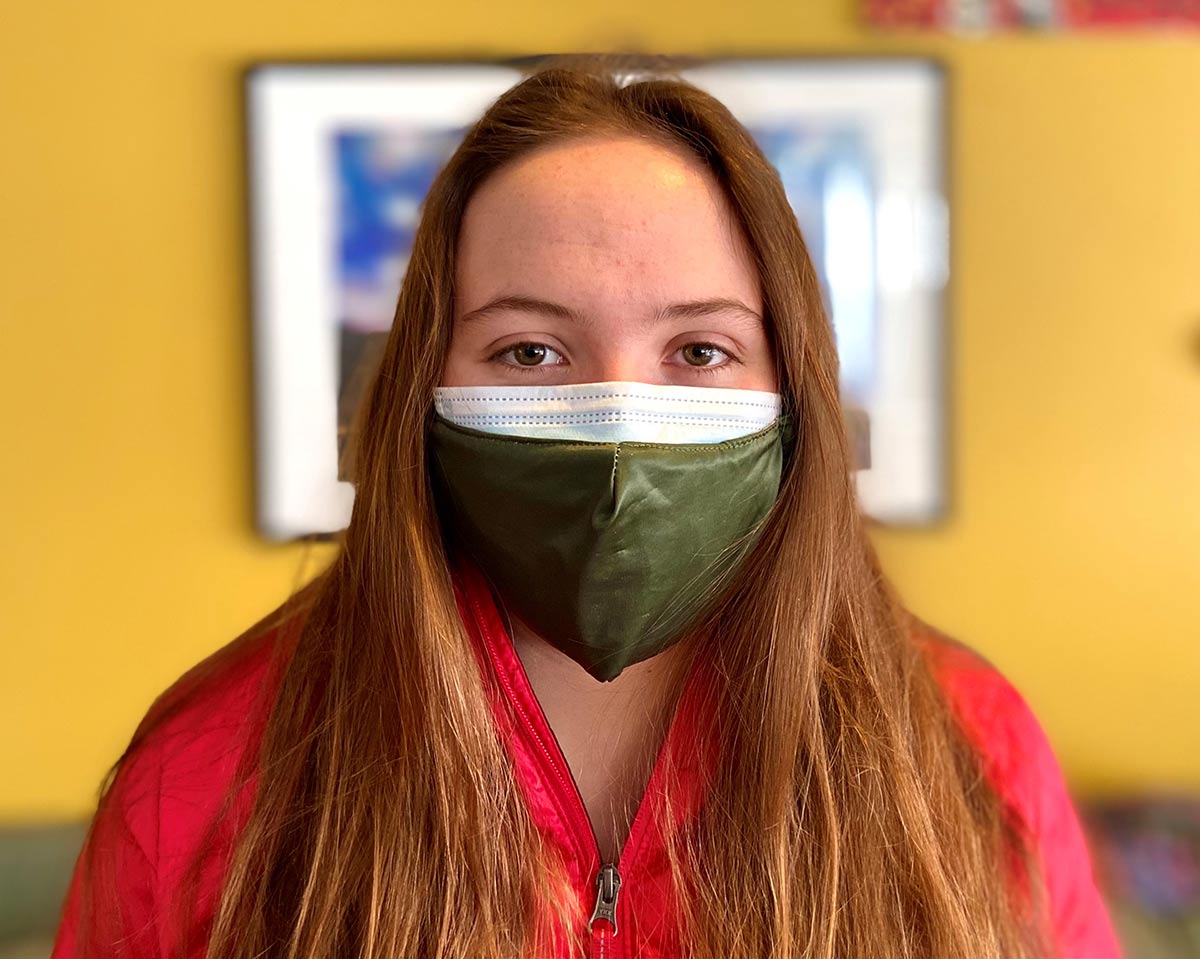
24 Feb UCHealth: Should you wear a double mask?
We curated this excellent article by Todd Neff from UCHealth Today. The title: “Should you wear a double mask?” Neff goes on to say: “Wearing a double mask, knotting and tucking surgical masks may reduce aerosols more, but wearing one mask correctly is half the battle.”
For all UCHealth insights, go here.

A young woman demonstrates wearing a double mask. Photo: UCHealth.
Mind the gaps.
That’s the conclusion of a U.S. Centers for Disease Control and Prevention study released Feb. 10. Considering the exponential spread of much more transmissible viral variants, it’s one we should act on.
The study found that it’s not just about the mask. It’s about the fit of the mask, and a good fit can make a huge difference in how well masks cut down on and protect from infectious aerosols and slow the transmission of COVID-19.
While there are many ways to improve fit – from mask fitters to pantyhose-type elastic sleeves – the CDC research team focused on two options.
The first was double masking: that is, wearing a three-ply cotton-cloth mask over a surgical mask (also called a medical-procedure mask). (The team did not test double-masking with two cloth masks.)
The second was knotting and tucking the surgical mask to change its fit and close the gaps…
The CDC study: Wearing a double mask
The CDC study happened in a lab. The key experimental tools included two rubber versions of human heads, a 10-foot by 10-foot by seven-foot sealable chamber, and a sort of humidifier that emitted potassium chloride particles of the sizes considered most complicit in the aerosol spread of the coronavirus (0.1 to 0.7 microns across). Those aerosols were pushed through the mouth of one of the rubber heads for 15 minutes at a time over several runs.
The team tested 10 scenarios, some with the aerosol-emitting rubber head unmasked, some with the receiving head unmasked, and some with both heads masked in different ways. They tested simulated coughs; they tested simulated breathing.
Key findings:
1.The unknotted surgical mask alone blocked 42% of the particles from a simulated cough; the cloth mask alone blocked 44% of those particles.
2. A cloth mask over a surgical mask (a double mask) blocked 92% of coughed particles.
3. Double-masking the emitter cut the exposure of an unmasked receiver by 82%; knotting and tucking the emitter’s surgical mask reduced it by 63%.
4. Leaving the emitter unmasked but double-masking the receiver cut the receiver’s exposure by 83%; when the receiver wore a knotted-and-tucked surgical mask alone, aerosol exposure fell by 64%.
5. When both emitter and receiver were double-masked, aerosol exposure fell by about 96%; the same held for when emitter and receiver both wore knotted and tucked surgical masks.
Points 1 and 5 point to the conclusion that the material of the mask – three-ply cotton or three-ply surgical – is a lot less important than making sure whatever mask one wears fits right.
“Fit matters. Wear a mask that covers your mouth and nose and doesn’t have big, gaping holes at the sides,” said Dr. Michelle Barron, UCHealth’s top infectious-disease specialist…
Todd Neff, for UCHealth
Todd Neff has written hundreds of stories for University of Colorado Hospital and UCHealth. He covered science and the environment for the Daily Camera in Boulder, Colorado, and has taught narrative nonfiction at the University of Colorado, where he was a Ted Scripps Fellowship recipient in Environmental Journalism. He is author of “A Beard Cut Short,” a biography of a remarkable professor; “The Laser That’s Changing the World,” a history of lidar; and “From Jars to the Stars,” a history of Ball Aerospace.


Sorry, the comment form is closed at this time.